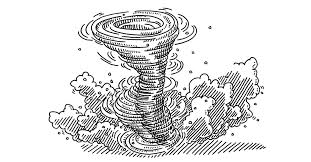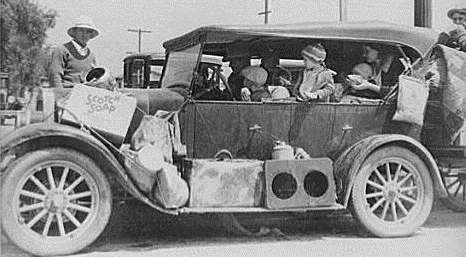- Home
- Social Studies
- Dust Bowl Migration
Farmlands Turn to Dust
In the early 1930s, during the worst of the Great Depression, thousands of farmers in the Plains states were forced to abandon their homes, their farms, and their livelihood.
In the previous decade they had been doing well; they had produced abundant crops and their farms thrived, but in an attempt to supply the needs of a clamoring public, they had overworked the land. During boom times, scant attention had been paid to crop rotation or soil conservation. Trees had been uprooted to give more space to profitable farmland. And, like other people in the United States, farmers had borrowed money, assuming that the good times would last.
But the good times didn’t last; after the stock market crash of 1929, farmers, along with everyone else, faced economic hard times. Crop prices dropped, and many farms were subject to bank foreclosures.

Then, enormous dust storms created by drought and winds swept through the land, making it uninhabitable and unworkable. Most of the livestock died and the machinery was rendered unusable.
By 1934, the Dust Bowl – a name that only hints at the bleakness – extended over some 25,000 square miles of land, from Texas to North Dakota. Most of the migrant farmers lived for years in poverty and some never recovered.

In a forced migration under heavy clouds of windblown topsoil, farmers and their
families, many in beaten up cars, fled west hoping to find work.
Questions ~
- Which states were likely to have been subject to the dust storms and the consequent farmer migrations?
- To which states did the migrant farmers go?
- How did geography help aggravate the depression in the United States?
- What caused the Dust Bowl environmental disaster?
- What American novel describes the plight of these farmers and the economic state of the country?
- Did Roosevelt’s New Deal help migrant farmers in the Dust Bowl years?
- What events would eventually help turn the economy around?
A principios de la década de los 30, durante la peor parte de la Gran Depresión, miles de agricultores en los estados de la zona de los llanos se vieron obligados a dejar sus casas, sus granjas y sus medios de vida.
Okay, so now I've put on some ads from Amazon - from which I may earn a few cents. (2025)



